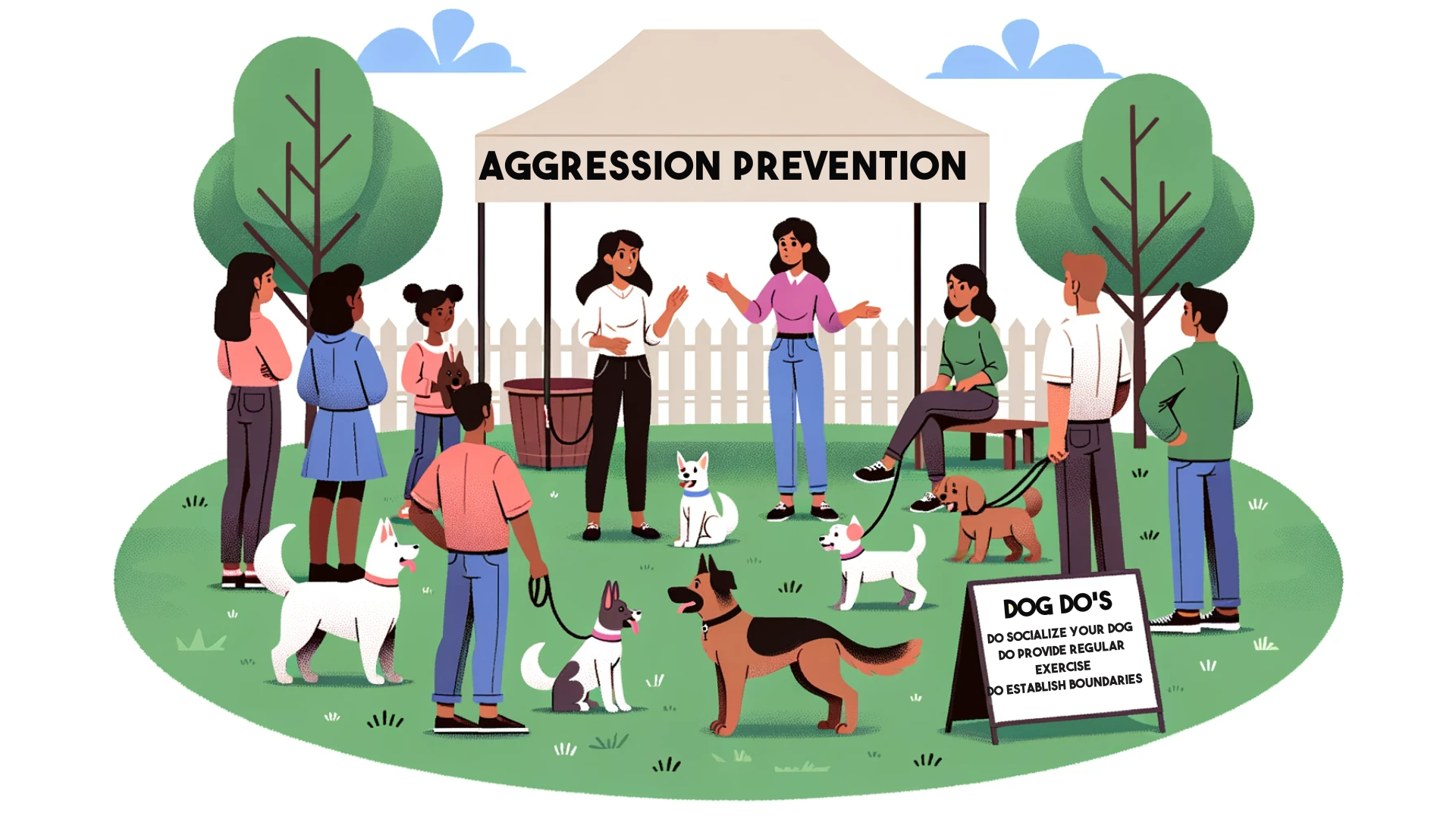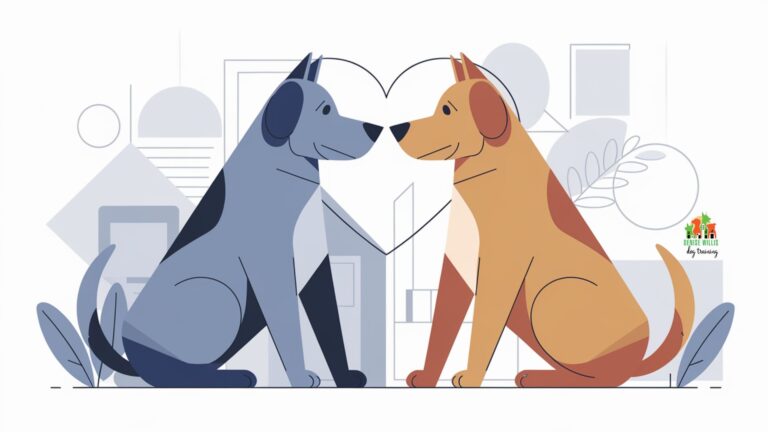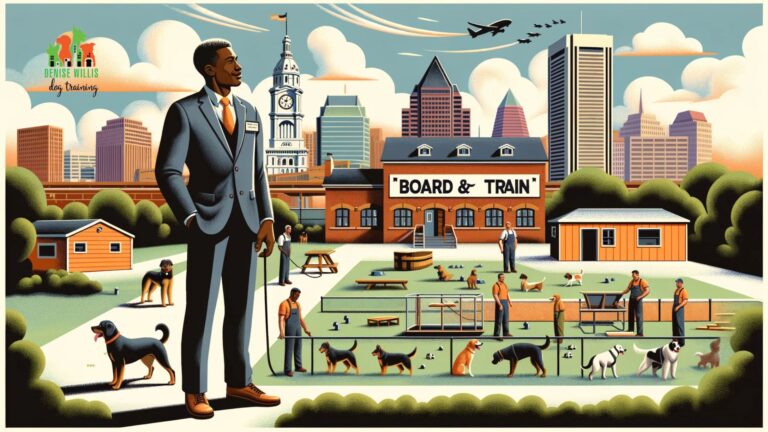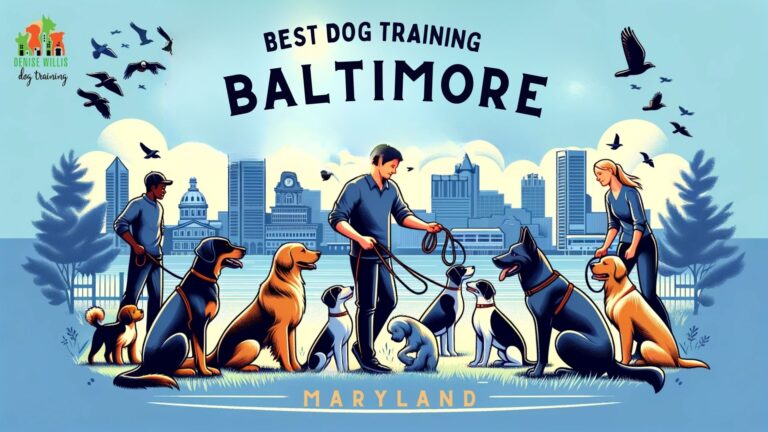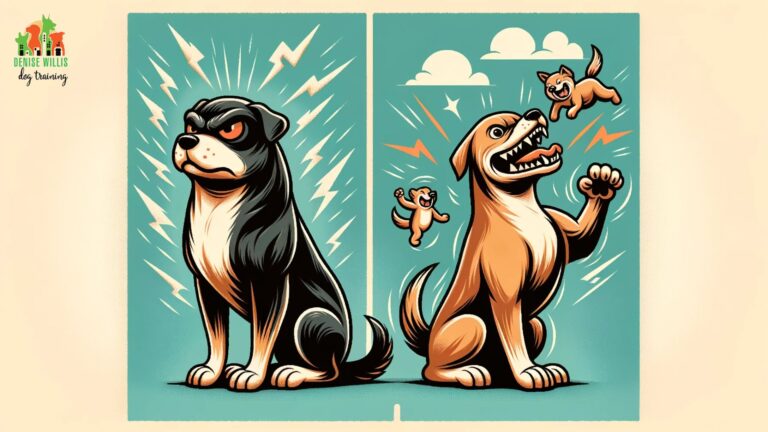Dog Aggression Solutions: A Complete Guide to Stopping Aggressive Behavior in Dogs
📍 Service Area Notice: DW Dog Training provides in-person training services exclusively in the Greater Baltimore area. While our blog content is designed to help dog owners internationally, our hands-on training services are locally focused. For readers outside our service area, we hope you find value in our articles and welcome you to reach out with questions!
Dealing with dog aggression can be stressful and concerning for any pet owner. An aggressive dog that grows, snarls, or bites can pose safety issues for your family and be difficult to manage. However, while challenging, dog aggression is a common behavioral problem that can often be improved with diligence and proper guidance. This complete guide to dog aggression solutions will provide you with an in-depth look at the causes of aggression, types of aggressive behavior, and most importantly, effective techniques to stop aggression and coexist safely with your dog.
What is Dog Aggression?
Dog aggression refers to a range of behaviors meant to intimidate or harm someone. It often progresses through several stages if not addressed. While the term may conjure up images of dogs violently attacking, aggression can encompass subtle body language like a prolonged stare or avoidance as well as actions like growling, lunging, snapping, or biting.
Aggression is a dog’s way of communicating something – whether it be fear, anxiety, a need to protect territory or resources, or predatory instincts. It’s important to remember that aggression is a symptom of an underlying issue rather than a diagnosis itself. Determining why your dog is acting aggressively is key to addressing the behavior.
Some common signs that may indicate impending aggression in dogs include:
- Stiff, rigid body posture
- Hackles raised
- Hard stare
- Growling
- Baring teeth
- Lunging forward
- Snapping jaws
- Biting
Often aggression progresses through escalating stages starting with body language signals, vocalizations like growling, then snapping, and finally biting. However, warning signs are not always present before a bite. Recognizing early indicators of aggression allows intervention before a situation becomes dangerous.
Key Takeaways on Dog Aggression Solutions
- Aggression in dogs has many underlying causes including fear, anxiety, protective instincts, lack of proper socialization, etc. Identifying the root cause is key.
- Work with your vet to rule out potential medical factors influencing aggressive behavior. Their guidance is crucial.
- Partner with a certified professional trainer or behaviorist to develop a customized behavior modification program.
- Use positive reinforcement techniques to teach and reward wanted behaviors. Avoid punishment which can worsen issues.
- Implement temporary management like avoidance, confinement, leashes, and muzzles to prevent incidents and keep everyone safe during training.
- Address specific aggression triggers using desensitization, counterconditioning, and rewarding calm responses.
- Be realistic and prioritize safety if long-term management is needed for severe aggression. Consult your training team.
- Prevent future aggression through proper socialization, training, exercise, leadership, routine vet care, and enrichment starting early.
- Be patient and consistent. Seek help early. Aggression takes time and diligence to overcome, but solutions are possible.
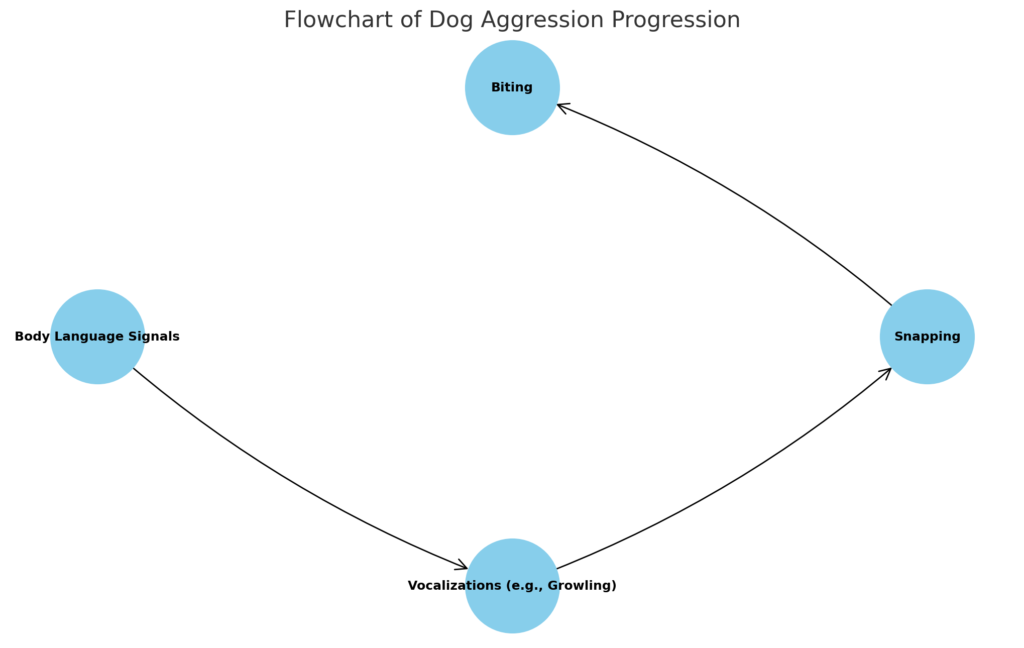
Common Causes of Dog Aggression
Aggressive behavior doesn’t arise out of nowhere – there are always underlying reasons that motivate a dog to act out. Determining the root cause of aggression is essential for correcting the behavior. Some common causes of dog aggression include:
Fear or Anxiety
Dogs may act aggressively if they feel threatened or scared in a situation. This fear-based aggression is often motivated by self-preservation and protecting themselves from perceived danger. Past traumatic experiences or a lack of socialization can contribute to fearful responses.
Protecting Resources
Dogs are hardwired to guard their territory, food, toys, and family members. Possessive, territorial, and protective aggression occurs when dogs try to claim certain spaces, items, or people from others. Resource guarding is a common example seen when dogs growl if you approach their food bowl.
Pain or Illness
Changes in behavior like sudden aggression could indicate an underlying medical issue. Dogs experiencing pain or discomfort due to arthritis, dental issues, injuries, or other problems may react defensively with growling or biting.
Predatory Drive
Some dogs have strong instincts to chase fast-moving objects including people or animals running. Predatory aggression usually occurs without warning and may be directed at children or other pets.
Lack of Socialization
Dogs who did not have positive social experiences early in life are more likely to show fear-based aggression toward people or other animals. Proper socialization is key for preventing aggression issues.
Genetics
A dog’s genes can play a role in fearful, anxious, or territorial tendencies linked to aggression. However, genetics are not a guarantee – any dog can become aggressive under the right circumstances.
Common Signs of Impending Aggression in Dogs
| Sign | Description |
| Hard stare | Intense direct staring |
| Hackles raised | Fur on back/neck stands up |
| Growling | Low, rumbling vocal warning |
| Baring teeth | Lips curl back to expose teeth |
| Lunging | Movement forward as if to bite/attack |
| Snapping jaws | Quickly biting air |
| Biting | Sinking teeth into skin |
Types of Dog Aggression
There are several distinct types of aggressive behaviors in dogs, categorized by what drives the aggressive response. Being aware of the different forms of aggression can help identify what motivates your dog’s behavior.
Territorial Aggression
Territorial aggression refers to when a dog defends its perceived territory or home turf from others. This behavior is motivated by a desire to guard territory from “intruders.” Targets are usually unfamiliar people or animals entering the home or yard.
Possessive Aggression
Also called resource guarding, possessive aggression involves defending food, toys, beds, or other resources from being taken away. Dogs may growl, snap, or bite when something they value is approached.
Protective Aggression
Dogs may become aggressive when protecting a family member, especially children. Mother dogs are extremely protective of their puppies. The aggression is driven by a desire to defend the “pack.”
Fear-Based Aggression
This occurs when a fearful dog becomes aggressive to avoid a perceived threat. Because they are motivated by self-preservation, dogs often skip warning signals and bite out of fear.
Social Aggression
Dogs may act aggressively toward other dogs when competing for status, mates, or resources. Same-sex aggression between males and females is common.
Leash/Barrier Frustration
This aggression occurs when dogs are restrained on a leash or behind a fence and cannot access another animal or person they want to chase or interact with. The barrier of frustration fuels reactive behavior.
Pain-Induced Aggression
Irritability from pain or illness can cause dogs to bite or snap aggressively if an area of their body is hurt or handled. Grouchy behavior can be the only sign of discomfort.
Safety Equipment for Aggressive Dogs
| Item | Purpose |
| Leash | Maintains control, prevents approaching triggers |
| Head halter | Aids in redirecting dog’s head/muzzle |
| Muzzle | Prevents biting; allows treats for counterconditioning |
| Crate | Confines dog securely when unsupervised |
| Gates | Creates safe zones and limits access |
Getting Veterinary Input
If your dog suddenly starts displaying aggressive behavior, the first step should always be to contact your veterinarian. An exam is crucial to rule out potential medical conditions causing or contributing to aggression.
Pain and Illness
Dogs in pain from injuries, arthritis, dental disease, gastrointestinal issues, or other problems may react aggressively when hurt or handled. Illnesses affecting brain function can also spark unprovoked aggression.
Medication Effects
Certain medications may have side effects that lead to increased reactivity, anxiousness, or irritability. Veterinarians can evaluate if medication changes are influencing a dog’s behavior.
Age-Related Changes
Senior dogs with cognitive decline may become more anxious or reactive. Medical conditions associated with aging could also contribute to aggression.
In addition to the initial exam, establishing an ongoing relationship with your vet provides several benefits:
- Regular wellness checks to catch developing health issues
- Guidance on medications that may help treat fear and anxiety
- Referrals to specialists like veterinary behaviorists
- Assistance in developing a training and management plan
- Monitoring your dog’s progress long-term
Veterinary consultation is a crucial component of addressing dog aggression cases. Be sure to partner with your vet throughout the process.
Common Medications for Canine Anxiety/Aggression
| Medication | Effects |
| Fluoxetine | Reduces overall anxiety/depression |
| Clonidine | Lowers blood pressure; calming effect |
| Gabapentin | Anti-seizure med; reduces anxiety |
| Trazodone | Serotonin modulator; relieves anxiety |
| Buspirone | Anti-anxiety without sedation |
Getting Professional Behavioral Help
While veterinary guidance is important, working with a professional trainer or behaviorist is also highly recommended for developing an effective behavior modification plan.
Benefits of Professional Help
- Properly diagnosing the type and cause of aggression
- Designing a customized training and counterconditioning program
- Providing ongoing support during training
- Ensuring proper safety protocols are in place
- Modifying techniques over time as needed
- Helping determine if long-term management is needed
What to Look For
Seek out these credentials and specialties when selecting a professional:
- Certified Applied Animal Behaviorist (CAAB or ACAAB)
- Veterinary Behaviorist (Dip ACVB)
- Certified Professional Dog Trainer (CPDT) with aggression experience
Avoid Punishment
Correction or punishment-based methods tend to worsen fear and anxiety – underlying causes of aggression. Positive reinforcement training is the safest approach.
Partnering with an experienced professional provides invaluable guidance in overcoming dog aggression issues through positive behavior modification.
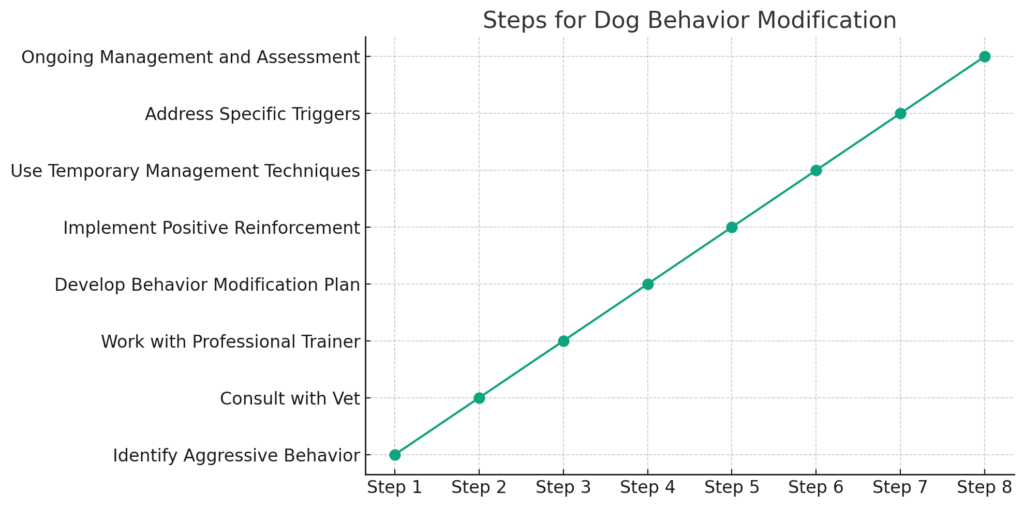
Management Strategies for Safety
While beginning training, it’s crucial to implement temporary management strategies to prevent aggressive incidents and keep everyone safe. This involves modifying the environment and using physical controls.
Environment Management
- Identify triggers and avoid exposing your dog to them
- Create safe spaces in your home with gates and crates
- Walk your dog at less busy times; drive to calm locations
- Limit access to spaces where guarding occurs like the kitchen
Physical Controls
- Keep your dog on a leash with family members able to control them
- Use secured tie-downs when you cannot directly supervise
- Utilize crates or rooms to separate dogs when unsupervised
- Consider a basket muzzle if aggression is severe
Warning Signs
Learn your dog’s early stress signals like lip licking, yawning, whale eye, and stiffening. At the first sign, create distance from the trigger.
The goal of management strategies is to set your dog up for success by preventing situations where aggressive responses are likely to occur until a more positive emotional response can be established through training. This keeps everyone safe in the interim.
Addressing Specific Aggression Triggers
While keeping your dog below their aggression threshold is prudent, you also want to implement customized training plans to address the underlying triggers.
Stranger Aggression
- Start counterconditioning at a distance from the trigger where your dog is calm
- Use high-value treats and praise to reward calm behavior
- Gradually decrease distance as your dog remains relaxed
- Take it very slowly to avoid triggering reactive behavior
Dog Aggression
- Again start at a distance where your dog notices the other dog but stays calm
- Slowly move closer as you continue to reinforce the wanted behavior
- If your dog reacts, you’ve proceeded too quickly. Go back to a previous distance
- Allow calm greetings on leash; don’t force interactions
Resource Guarding
- Hand-feed your dog during meals to build positive associations
- Trade high-value treats for lower priority items to teach “drop it”
- Use treats to reward calm behavior when approaching your dog and their resources
Kids and Family Members
- Teach kids how to safely engage with your dog to avoid incidents
- Use baby gates to allow your dog to retreat to their safe space when overwhelmed
- Reward calm interactions with family members
- Provide alternate activities when kids are present
The goal is to change your dog’s emotional response to triggers by making great things happen in their presence. This reframes how your dog views the situation.
Positive Reinforcement Training
Positive reinforcement training is the foundation for addressing dog aggression issues. This technique works by rewarding wanted behaviors and ignoring unwanted ones.
How It Works
- Identify a desired behavior you want your dog to display like sitting calmly.
- Wait for your dog to offer the behavior on their own.
- The moment they do, reward with high-value treats and enthusiastic praise.
- Over time, the wanted behavior will increase.
Benefits
- Creates a positive association through rewards
- Avoids using punishment which can increase fear
- Focuses on teaching incompatible behaviors
- Provides mental stimulation and enrichment
Examples
Rewarding wanted behavior like:
- Four paws on the floor when greeting
- Loose leash walking
- Settling calmly on a mat
- Relaxed posture around other dogs
Ignore unwanted behavior like:
- Jumping up
- Lunging or barking on a leash
- Pacing around guests
- Stiffening at the sight of another dog
Positive reinforcement training provides a force-free approach to behavior modification that helps aggressive dogs change their emotional responses. It simply focuses on rewarding the behaviors you want to see more of.
Socialization Checklist for Puppies
| Exposure | Completed? |
| Children | |
| Adults of All Ages/Abilities | |
| Other Dogs | |
| Cats/Other Pets | |
| Car Rides | |
| City Sounds/Sights | |
| Rural Sounds/Sights | |
| Water | |
| Handled All Over |
Medications If Needed
In some cases of severe fear, anxiety, or impulse control issues, medication may be recommended as an adjunct treatment to help in behavior modification.
How Medication Can Help
- Reduce overall anxiety and reactivity
- Increase focus during training
- Diminish obsessive-compulsive behaviors
- Limit impulsive reactions
Things to Know
- Not a substitute for training, only a supplement
- Should be prescribed by a veterinarian
- Effects are temporary without behavior modification
- Time is needed to evaluate the efficacy
Common Medications
- Fluoxetine: anti-anxiety/depression
- Clonidine: blood pressure med that reduces anxiety
- Gabapentin: anticonvulsant used for calming
Considerations
- Work with your vet to find the right medication/dosage
- Never give human medication without vet approval
- Ensure good veterinary monitoring of side effects
- Be committed to also implementing behavior modification
While not appropriate for all cases, medications are a tool that can help lower dogs’ baseline anxiety and reactivity levels to set them up for training success. As always, partner with your vet to determine if anxiety mediation could be beneficial.
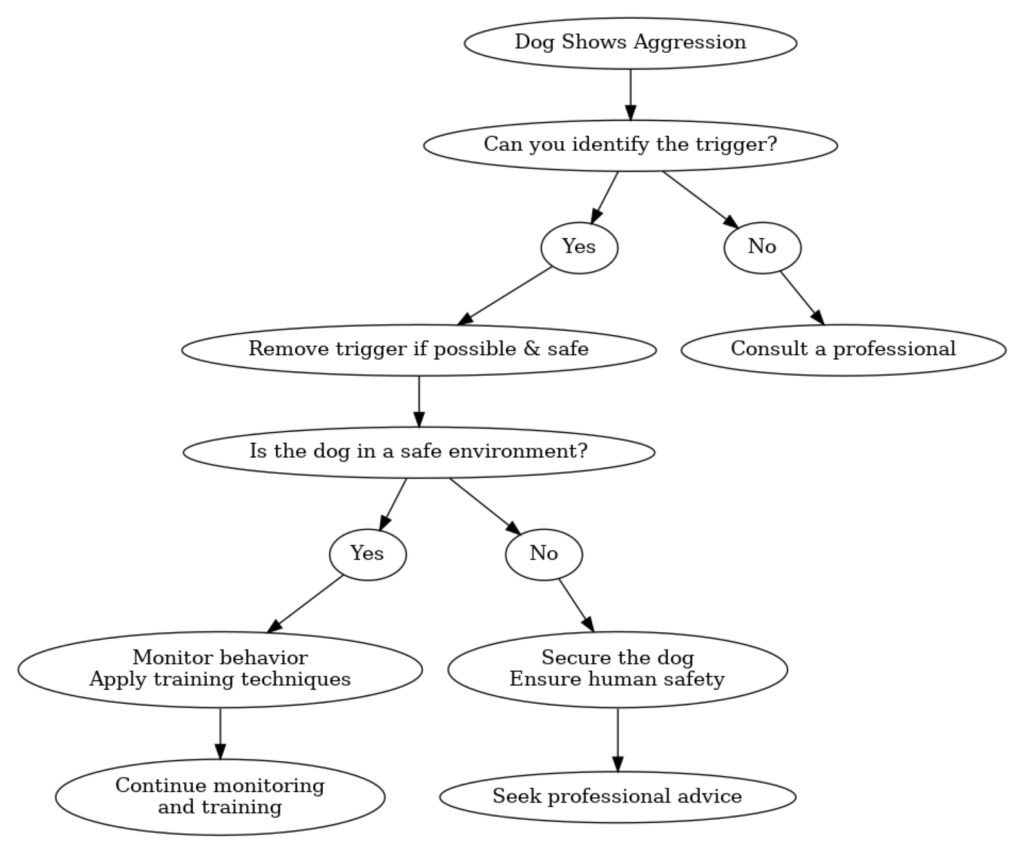
Preventing Future Aggression
While dealing with current aggression is important, you also want to take steps to prevent aggression from developing again in the future.
Proper Socialization
Early positive experiences around a wide variety of people, animals, places, and stimuli help build confidence and reduce fear-based aggression later on. Prioritize controlled socialization starting in puppyhood.
Consistent Rules
Setting fair and predictable rules and sticking to them helps a dog understand its place in the family and avoids confusion. Be a calm, assertive leader.
Training and Exercise
Ongoing training provides mental stimulation, while aerobic exercise helps burn energy and anxiety. Engage your dog’s mind and body daily.
Routine Veterinary Care
Stay on top of wellness exams, and vaccines, preventing illness/injuries, and promptly treating conditions provide stability. Monitor lifespan changes proactively.
Environment Enrichment
Rotating toys, food puzzles, chews, playtime with other pets, outings and more enhances the quality of life and contentment. An enriched dog is a calmer, less reactive dog.
With diligence, you can help prevent conditions associated with problem aggression like under-socialization, lack of leadership, pent-up energy and stress, discomfort, or insecurity. A happy dog is a friendly dog!
Living with an Aggressive Dog Safely
If your dog continues to show aggressive behavior even after training and treatment, long-term management will be crucial for everyone’s safety.
The Reality of Ongoing Management
- Aggression may always be a tendency requiring vigilance
- High level of supervision is imperative
- Relapses can occur – expect the unexpected
- Triggers must be avoided whenever possible
- Training is lifelong to reinforce wanted behaviors
Prioritize Safety
- Use secured gates, doors, and crates to separate dogs when unsupervised
- Ensure dogs are confined or on a leash/muzzle with guests
- Supervise closely when around children or elderly adults
- Warn visitors not to approach or interact with dogs
- Post warning signs on entryways to home if needed
Provide the Best Care
- Continue working with your veterinarian and trainer
- Make time for daily exercise, training, and enrichment
- Monitor for signs of stress, anxiety, or illness
- Keep access to plentiful food, water, toys, and comfy beds
- Show patience and compassion for your dog
While not an ideal situation, long-term management is sometimes the safest option. Focus on improving quality of life while prioritizing safety. Your veterinary and training team can provide ongoing support.
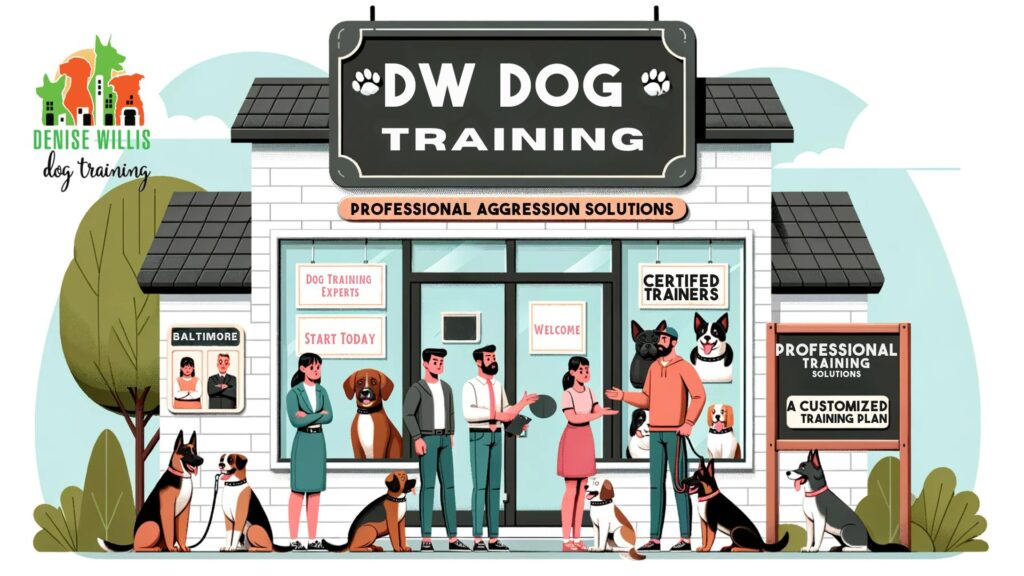
Final Thoughts: We Can Help with Professional Dog Aggression Solutions
Dealing with dog aggression poses challenges that can often feel insurmountable. While ongoing training, management, and adjustment in your home life are necessary, our professional guidance at DW Dog Training can truly make the difference in overcoming aggression issues long-term.
Our team of highly experienced dog trainers recognizes that each dog is unique. We do not believe in cookie-cutter approaches. Our individualized training programs are based on positive reinforcement techniques customized to your dog’s needs. Whether your dog is exhibiting aggression toward strangers, family members, other pets, or in specific situations, our certified trainers have the knowledge to diagnose the underlying cause and implement an effective behavior modification plan.
At DW Dog Training, we offer customized services like private in-home training and board and train programs to socialize your dog, reinforce good behaviors, and change unwanted aggressive responses. We understand the importance of clear communication and building a strong relationship between you and your dog. Our top priority is providing solutions tailored to your dog and family, with ongoing support well after the initial training.
If your dog has shown aggressive tendencies and you need professional guidance from trainers who prioritize safety and force-free techniques, contact us at DW Dog Training today. We can schedule a consultation, evaluate your dog’s behavior, and discuss a plan to help your dog become an obedient and happy companion. With our assistance, you and your dog can learn to coexist peacefully and enjoy each other’s company. Don’t wait to seek help – we are ready when you are!

